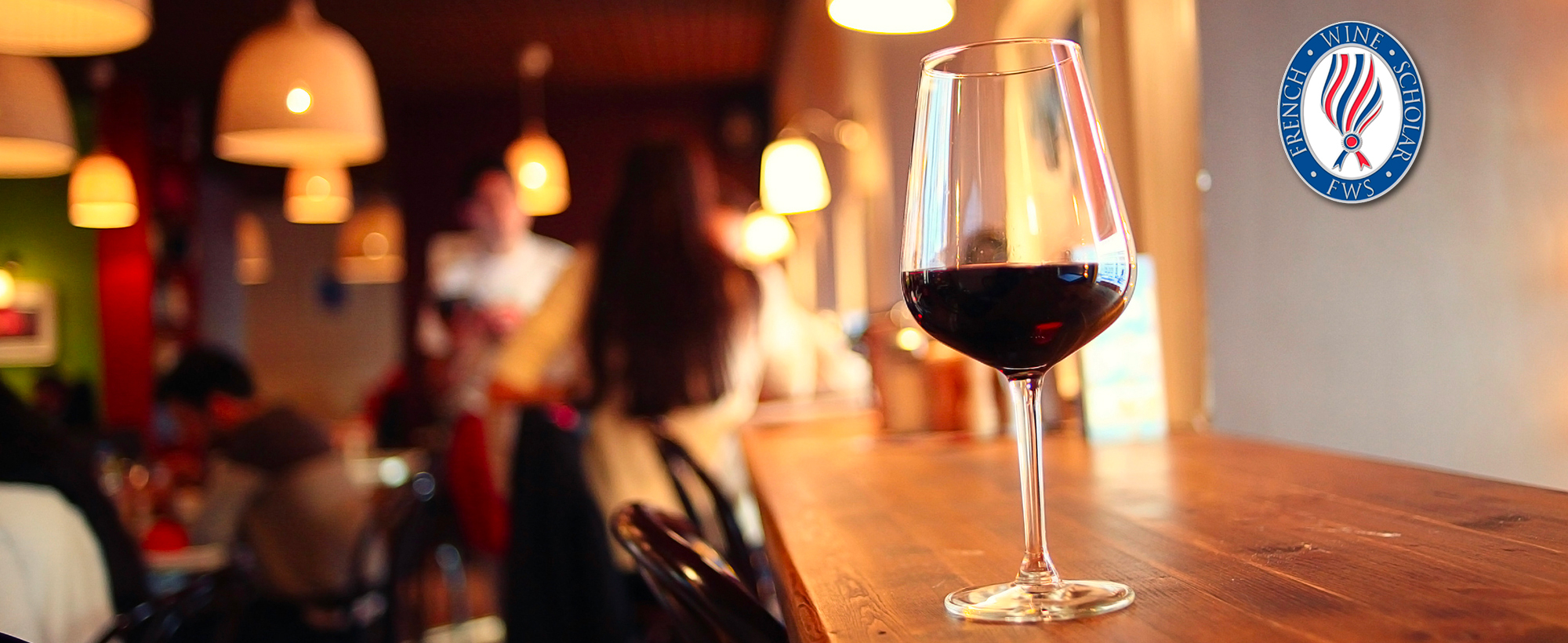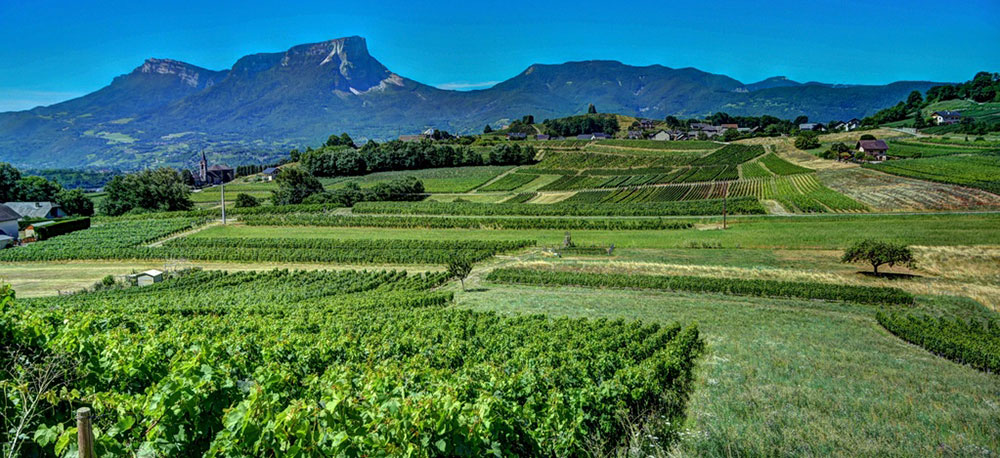
French Wine Scholar
PROGRAM OVERVIEW
The French Wine Scholar program is a study and
certification program providing current, accurate and indepth
information on the wines and wine regions of France.
Developed and administrated by the Wine Scholar Guild
with the support of the French Ministry of Agriculture, this
program is aimed at advanced students of wine whether
professionals or serious wine hobbyists.
Individuals who follow this in-depth curriculum and pass
the exam, earn the French Wine Scholar (FWS) postnominal
which may be incorporated into a professional
signature (e.g. John Smith, WSG).
PROGRAM CONTENT & DESIGN
The development of this course of study involved many French Inter-Professional organizations which shared resources, information and assistance.
The Wine Scholar Guild amassed this body of information into a study program with manual, online modules, teaching materials and exam that covers grape varieties, viticulture, winemaking, French wine law and all of the French wine regions including Jura, Savoie and Corsica.
This core body of knowledge is important whether an individual sells wine, buys wine or teaches about wine.
There is no other study and certification program in the world that covers France with such breadth and depth. The material is comprehensive and updated every year.
The program allows members of the wine trade to set themselves apart from their peers by specializing in the wines of France!
- France vies with Italy and Spain as the #1 wineproducing country in the world.
- The most popular commercially produced grape varieties (Sauvignon Blanc, Chardonnay, Chenin Blanc, Pinot Gris, Merlot, Malbec, Cabernet Sauvignon and Syrah) are all native to France!
- When it comes to wine culture, France is the historic benchmark!
STUDY PACKAGE
Included in your tution is the French Wine Scholar Study Package composed of: The FWS study manual, the FWS E-learning Program and the FWS Exam.
WSG STUDY MANUALThe 280-page, full-color study manual provides all the information from which the test questions are derived. You do not need to research you own study materials; everything you need to know is in the manual.
WSG E-LEARNING PROGRAMTo complement the manual and classes, there are 10 multimedia E-learning modules with full audio narration plus…
- A comprehensive series of live and recorded webinars on regional wine styles with suggested wine list presented by Jay Youmans MW
- Review quizzes for self-evaluation
- Instructor Q&A forum for personal assistance
- Student forum for community interaction
- Downloadable maps
You can track your progress. Need to leave an online module before finishing it? Your place is automatically bookmarked for you and opens to where you left it when you return.
Online quizzes are scored immediately giving you feedback on the level of your proficiency. Need to retake a quiz? The questions shuffle to keep things fresh.
Registration is for one full year with an option to extend for a nominal fee.
WSG EXAM :For those enrolled in the program with an WSG Program provider you will sit a paper exam with your class when scheduled
ABOUT THE WSG EXAM
Wine professionals who follow this in-depth curriculum on the wines of France and pass the exam, earn the French Wine Scholar (FWS) post-nominal.
The exam is given in multiple-choice format. There are 100 questions and passing score is 75. You have one hour to complete the test.
- Candidates scoring 85-90 pass with HONORS.
- Candidates scoring 91-100 pass with HIGHEST HONORS.
PREPARING FOR THE EXAM:
In order to prepare properly for the WSG exam, you must read and study the WSG manual carefully. At first, it may seem a daunting body of knowledge to tackle…but we would like to give you a few tips.
The exam is comprehensive. It will cover all the wine regions of France. This means you must study everything…Corsica too! But, the food and wine pairing texts are for your personal edification. There are no exam questions on this material.
For those enrolled in the program with an WSG Program provider, you will sit a paper exam with your class when scheduled.
FRENCH WINE SCHOLAR DETAILED CURRICULUM
The French Wine Scholar program presents each French wine region as an integrated whole by explaining the impact of history, the significance of geological events, the importance of topographical markers and the influence of climatic factors on the wine the glass. No topic is discussed in isolation in order to give students a working knowledge of the material at hand.
Internationally recognised
Alsace
In Alsace, the diversity of soil types, grape varieties and wine styles makes for a complicated sensory landscape. Do you know the difference between Klevner and Klevener? The relationship between Pinot Gris, Tokay and Furmint? Can you explain the difference between a Vendanges Tardives and a Sélection de Grains Nobles? This class takes Alsace beyond the basics.


Champagne
The champagne process was an evolutionary one not a revolutionary one. Find out how the method developed from an inexpert and uncontrolled phenomenon to the precise and polished process of today. Learn why Champagne is unique among the world’s sparkling wine producing regions and why it has become the world-class luxury good that it is.
Bourgogne
In Bourgogne, an ancient and fractured geology delivers wines of distinction and distinctiveness. Learn how soil, topography and climate create enough variability to craft 101 different AOCs within this region’s borders! Discover the history and historic precedent behind such subtle and nuanced fractionalization.


Beaujolais
Discover the multi-faceted nature of Beaujolais as expressed through its different soil types and vinification techniques. Learn how carbonic maceration and traditional fermentation changes the flavors in the glass. Find out how varying trace elements in the granitic soils of the Crus Beaujolais create wines of different character and age-ability. Beaujolais may be a light-hearted quaff, but the subject is far from simple.
Jura
The Jura lies tucked between Burgundy and Switzerland and represents the eastern uplift of the Saône graben. Although the wines are rarely found outside the Jura itself, it produces some unique wine products from non-mainstream grape varieties that merit attention. The region is famous for Vin Jaune, but Jura has given birth to some notable wine talent also. Pasteur, responsible for ground-breaking work in fermentation science and Millardet, responsible for both “Bordeaux Mixture” and the grafting of French vines onto American rootstock as a solution to phylloxera were born here! But that’s not all! The Arbois zone of production was one of the first to be granted AOC status in 1936. The region is a dynamo!


Savoie
Savoie is an alpine region just south of the Jura. Very little wine is exported; most of the production is consumed by tourists who visit for ski and other winter sport. The wines, however, are as colorful as the grapes that go into them--Jacquère, Altesse, Gringet, Molette, Mondeuse Noire, Persan—and are as fun to study as they are to drink…if you are so lucky.
Loire Valley
Did you know that the Sauvignon Blanc vineyards of Menetou-Salon, Reuilly, and Quincy are all grown on Kimmeridgean marl? That one of the longest-lived white wines in the world is Savennières? Are you familiar with Breton, Côt and Pineau d’Aunis? It’s time to explore a wine culture as long and wide as the river itself. There are over 5 dozen AOCs that flank the banks of the Loire. Learn about the undiscovered treasures of this region and explore its diversity of grape varieties and wine styles.


Bordeaux
Study Bordeaux from the ground up. Here, wine styles are predicated by a combination of soil, grape and the hand of man. Explore Bordeaux’s distinctive terroirs in order to better understand the nature of the blend, then discover how and why the blend has changed over the past 150 years.
SouthWest
Viticulture was established in Gascony before Bordeaux was planted to the vine. Magdeleine Noire des Charentes, the parent of both Merlot and Malbec is believed to have originated here. The grapes are interesting and highquality, the wines are good but the region languished in obscurity because Bordeaux blocked the Southwest’s access to the global wine market by controlling trade through its port. Landlocked for centuries, this region is finally and justifiably beginning to make a name for itself. This cluster of growing regions has adopted an “all for one and one for all” face to the wine world. And why not? D’Artagnan, the fourth of the three Muskateers hailed from Gascony and coined the phrase!


Languedoc-Roussillon
Although Languedoc and Roussillon were administratively joined in 1972, they are historically, culturally and topographically two distinct regions. Roussillon produces 80% of France’s Vins Doux Naturels crafted from old vine Spanish grape varieties. Yet today, it also crafts many dry blockbuster reds from those same old vines. Languedoc represents a cornucopia of vines that have historically gone into varietally labeled IGP products or simple Vins Sans IG. Today, it re-discovers its terroir and its grape legacy with new AOCs and a collective drive for quality. Together, Languedoc-Roussillon represents the last wine frontier in France. Things have changed here. Keep current!
Rhône Valley
The Rhône River serves as the gravitational axis around which its two halves revolve; the northern half clings tightly, the southern half expands outward and experiences less pull to the riverbanks. These two different wine cultures possess distinctive soils and topographies and they craft vastly disparate wines with unique personalities. It’s one region, but two brave new worlds. Explore them both.


Provence
Did you know that Provence is the oldest wine region in France? It is also the only region in France and the only region in the world to focus primarily on the production of rosé. In fact, the local vignerons have been perfecting the craft for 2,600 years! Learn all about Provence’s path to pink as well as its stellar production of dry reds and whites. It’s not all sunflowers and lavender in this sun-drenched part of France!
Corsica
The island of Corsica has a long and colorful past. Throughout the millennia, it has been ruled by no less than six different nations and each of them have left their mark. However, many of the region’s winemaking traditions and grape varieties are Italian due to the island’s close proximity to that country. Today, Corsica is indeed French with an Italian accent. Discover its rich history… in the glass.

